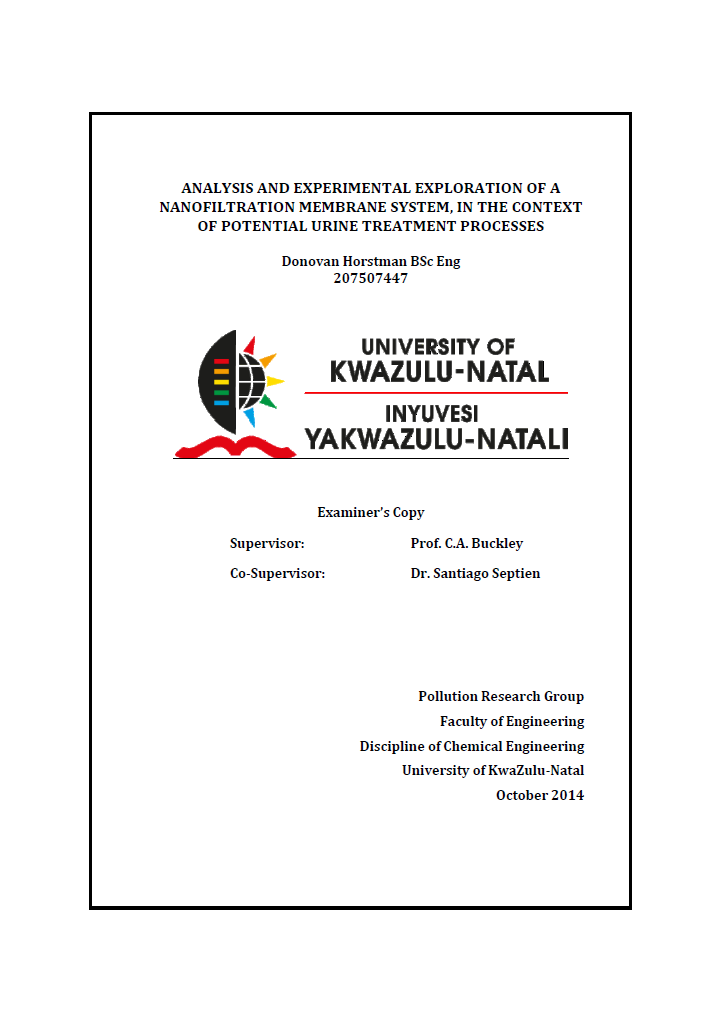This work determines the viability of a membrane system to recover salts valuable for potential agricultural use in urine, while separating these from any undesired components such as salts detrimental to plant growth.
To this end, membranes were compared to processes currently in use, or those proposed for future use, for treating sewerage and desalinating brines, as urine is a saline solution. The membrane processes in general were considered favourable as they usually require less energy than the other processes, are modular and mechanically relatively simple, can be used in many environments, and usually require no chemical additives to achieve separation.
Many configurations involving membrane systems would be possible, the most promising involving a combination of microfiltration pre-treatment for organics and solids removal, a nanofiltration membrane to split the potassium, phosphorous and nitrogen from the sodium chloride, and a forward osmosis membrane for the final separation to obtain potable water. The lack of detailed information regarding the nanofiltration membrane separation meant that the remainder of the project focussed on experimentally determining whether a nanofiltration membrane could perform the required salt separation. Three DOW-Filmtec polyamide membranes were chosen, namely the NF 270, NF 90 and XLE membranes, as they are readily available, commercially used membranes and polyamide seemed to be the most promising membrane material based on a review of the available literature.
Two solutions were tested using the membranes, namely stored urine and a synthetic urine solution. The membranes achieved rejections of between 20 and 65 % for nitrogen, 45 and 90 % for potassium, 35 and 80 % for phosphorous, 40 and 85 % for sodium, and 20 and 65 % for chloride. The fouling for the NF 270 membrane was negligible, while that of the NF 90 and XLE membranes resulted in around 15% decrease in flux. The flux of the NF 270 membrane, between 80 and 100 l/m2.h at 800 kPa TMP, was the highest, as expected, and corresponded well with literature values. The other membrane fluxes were a considerably lower, never exceeding 15 l/m2.h at 800 kPa TMP.
The necessary salt separation could not be achieved by the selected membranes and it was recommended that another membrane material should be tested, as well as repeating some experiments with the current membranes because of the high uncertainty of some of the results.
Bibliographic information
Horstman, D. (2016).
Analysis and Experimental Exploration of a Nanofiltration membrane System, in the Context of Potential Urine Treatment Processes Master thesis from the Pollution Research Group, at the University of KwaZulu-Natal (Durban, South Africa)
Filter / Tags
Case studies in other formatsEnglish
Downloads
MScEng Thesis - Urine NF
Download
Type: application/pdf
Size: 3.78 MB

Published in: 2016
Pages: 89
Publisher:
Author(s):
Horstman, D.
Uploaded by:
UKZN
University of KwaZulu-Natal
Location of library entry:

